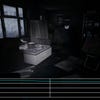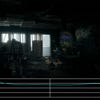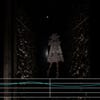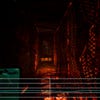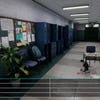Silent Hill: The Short Message - an Unreal future for the franchise?
A preview of the series' future on PlayStation 5?
Revealed during the latest PlayStation State of Play, Silent Hill: The Short Message is a new free-to-play horror game that stealth-dropped on the PSN store. As well as being worth playing in its own right, this 12GB PS5-only demo also hints towards what the next mainline Silent Hill entry might look like.
The Short Message is built on Unreal Engine, and developed by HexaDrive - the tech masterminds behind Okami HD and Zone of the Enders HD Collection on PS3, many years back. The whole thing can be finished in less than two hours, and has an entirely self-contained story spanning three chapters. It puts you in the shoes of Anita, who enters an apartment block in search of her deceased friend, Maya. Haunted by text messages from Maya - and armed with nothing but a phone flashlight - the goal is to explore each decaying room, uncover clues, solve puzzles and escape pursuit.
Let's address the elephant in the room first: The Short Message has major parallels with PT, released back in 2014 on PS4 as a free-to-play taster for what would have been the next Silent Hill game - Hideo Kojima and Guillermo del Toro's ill-fated Silent Hills. Its delisting from the PlayStation store has given the game a mythical status ever since - its scarsity only adding to its allure. But the concept of running through the same area in a circuit with new details and events being added each time was a clever hook. It's an idea that's repeated here in The Short Message, too, chronicling the protagonist's loss of sanity from a first-person perspective.
As you might expect from a game of this description, The Short Message explores heavier themes relating to mental health, from trauma and depression to suicide. These topics are embedded into the visual design of each area, from apartments crammed with post-it notes to ghost-like apparitions lining school halls. The art direction bewilders with rich and - at times - upsetting detail. You'll be tasked with searching locust-infested bathrooms, trollies filled with baby dolls, and a nightmarish version of a school campus - all while evading a mysterious figure covered in cherry blossoms. Much of this action is interspersed with cut-scenes, some in-engine and others using real-world footage.
Once you reach the 'end' of the game so to speak, you're taken back to the start to retrace your footsteps with new darker details, new rooms and new clues and flashbacks. Expectations are subverted, again much in the spirit of P.T. Getting to the true end point though demands a keen eye for clues, solving the very rare puzzle, and escaping the terrifying creature. The Short Message may understandably not be to all people's tastes, then, but HexaDrive's art direction is certainly accomplished.
The idea of using your phone's flashlight for dark rooms also works well. It's something of a horror game trope by this point, but having light bounce across each object in a room, casting shadows, creates a wonderfully chilling effect. The way Hexadrive changes the detail around you generates an instant jump-scare that's well exploited. Post process tricks like camera blur, film grain and a glitch effect also help in this aspect, by reducing visibility. And another nice touch is that the mysterious figure in pursuit uses a decimated frame-rate. Frames are deliberately chopped out of its movement, recalling the stop-motion moments from Sam Raimi's Evil Dead films, creating an otherworldly, off-kilter result.
What of the resolution, then? I'm glad to report the game runs at a crisp, native 3840x2160, though with no dynamic resolution scaling in play. By fixing at 4K the image is clear but it has an evident impact on performance - which is fully unlocked to run at up to 60fps. That means you see the full gamut from 25fps to 60fps, depending on the scene, with most areas lurking at around the 45fps mark. The upside is, that's just high enough for VRR to save the day on compatible displays at points. Unfortunately, this fluctuating frame-rate without VRR manifests as constant judder and occasionally choppy camera movement. In the end, heavy post effects and rapid movement are a key trigger for sustained frame-rate drops here and performance generally worsens by the chapter.
The cut-scenes in The Short Message have unique issues too. The real-world filmed footage here is presented with a 30fps cap and uneven frame-pacing - an odd quirk that introduces judder that's most likely not present on the original recording. Still, these filmed elements are cleanly presented and work surprisingly well in building the story. Swap over to the in-engine scenes though, and inevitably the limits of real-time character rendering stick out. Character model detail, skim materials and light interaction are well handled via Unreal Engine, but the contrast in style with actual footage of the cast only highlights its limitations. More to the point, the game's lowest frame-rates arrive during these in-engine cut-scenes. At times it's capped at 30fps with uneven frame-pacing, while at others - notably on the rooftops overlooking the foggy streets - it goes below 30fps.
Any close-up of Anita gives the PS5 its greatest stress point - which is surprising to see. Shots of the flower-bed, or the balcony area with the taxing fog effect, are also big triggers for performance dips. But, it's not entirely clear what the cause is for drops around interior areas. Despite the impressively high detail level, the experience is mostly spent walking narrow hallway area. There's no need for the game to be drawing in masses of detail in the distance, as we might see in other games with wide open levels.
Reflections, where they appear on the varnished locker area floors, also appear to depend on cubemaps. The more taxing SSR method for reflections is used on mirrors, at least, but the application there is rare at best. Plus, most environments often use baked lighting, rather than any bounce lighting or advanced GI technique. In theory then, this shouldn't tax the PS5 hardware to quite the extent we're seeing. One likely cause for drops is that the game is typically fixed at a high 4K resolution - ambitious for any Unreal Engine title on current-gen. Adopting DRS would help hugely to keep GPU demands more constant and frame-rates higher.
Despite these few technical shortcomings though, The Short Message is a welcome surprise from the PlayStation State of Play. As a free game, there's really nothing to lose by giving it a couple of hours. Plus, the fact that it is short means it doesn't outstay its welcome.
From a tech perspective, it's fascinating to see a sample of what may manifest as the next Silent Hill project. Between the engine choice, the first-person viewpoint, and the striking visual design, much of this could translate across to a full game, especially as its director, Motoi Okamoto, is also on the credits as a producer for Silent Hill f - the ninth mainline entry. On that point we'll really have to wait and see. As far as The Short Message is concerned, the mystery surrounding it works in its favour. Much like PT's surprise reveal a decade go, the abstract nature of such a small sample only builds excitement around the series' future.




